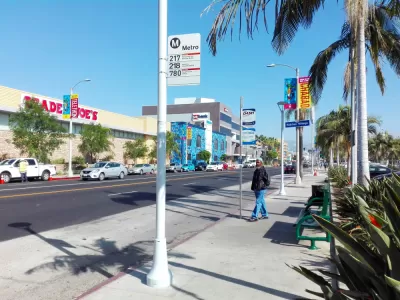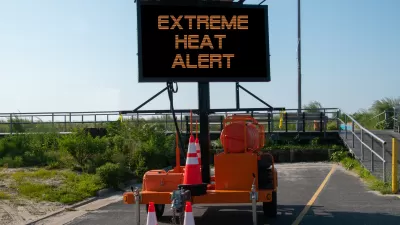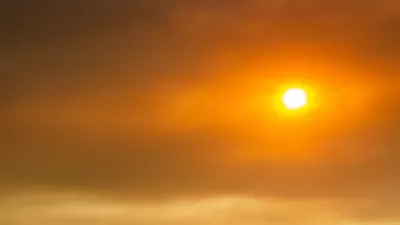A new project aims to understand the unseen impact of ultraviolet radiation beyond extreme heat and mitigate its effects on people.

Writing in The Architect’s Newspaper, Ersela Kripa and Stephen Mueller analyze the need for shade in urban areas as extreme weather and heat waves become more common and more deadly.
As part of a study by the Project for Operative Spatial Technologies (POST) at the Texas Tech University Huckabee College of Architecture regional site in El Paso, the authors are beginning to assess the way exposure to ultraviolet radiation affects people, and how the built environment can mitigate these impacts in the cross-border community of El Paso, Texas. “A vertical design studio will endeavor to visualize innovative and effective designs for safe public shade. Student design research projects will provide positive health impacts to borderland communities through architectural and urban design of computationally informed, radiation-aware public shade structures, designing models, and prototypes to enact regional transformations at scale.”
The Irradiated Shade initiative “develops computational mapping, drawing, and modeling tools to enable designers to uncover, represent, and protect against the unseen dangers of ultraviolet radiation in public shade.” The project aims to understand the impacts of UV radiation, quantify exposure in a given area, and contextualize disparities in different communities.
As a test, the initiative is developing a “safely shaded outdoor classroom for school-age children at the trailhead of a regionally significant archaeological site” focusing on “an innovative yet low-cost structural shading assembly: Custom shading modules are designed to interlock as a reciprocal frame, using minimal material to achieve the required long span.”
The authors write that “By creating a design workflow that visualizes and spatializes the effects of the built environment on UV exposure, we can produce and assess a taxonomy of locally adapted, protective shading geometries, enabling safer outdoor environments amid this emerging and escalating threat.”
FULL STORY: Unpacking what it means to design safe shade

Manufactured Crisis: Losing the Nation’s Largest Source of Unsubsidized Affordable Housing
Manufactured housing communities have long been an affordable housing option for millions of people living in the U.S., but that affordability is disappearing rapidly. How did we get here?

Americans May Be Stuck — But Why?
Americans are moving a lot less than they once did, and that is a problem. While Yoni Applebaum, in his highly-publicized article Stuck, gets the reasons badly wrong, it's still important to ask: why are we moving so much less than before?

Using Old Oil and Gas Wells for Green Energy Storage
Penn State researchers have found that repurposing abandoned oil and gas wells for geothermal-assisted compressed-air energy storage can boost efficiency, reduce environmental risks, and support clean energy and job transitions.

Minneapolis Bans Rent-Setting Software
Four cities have enacted restrictions on algorithmic software that can inflate rent costs.

Oakland to Add 244 New EV Chargers
Oakland plans to launch its new charging network at eight locations by the end of 2025.

Jane Goodall Inspires with Message of Hope, Resilience, and Environmental Action
Speaking in Pasadena, Jane Goodall offered a hopeful and inspirational message, urging global compassion, environmental responsibility, and the power of individual action to shape a better future.
Urban Design for Planners 1: Software Tools
This six-course series explores essential urban design concepts using open source software and equips planners with the tools they need to participate fully in the urban design process.
Planning for Universal Design
Learn the tools for implementing Universal Design in planning regulations.
Heyer Gruel & Associates PA
City of Moreno Valley
Institute for Housing and Urban Development Studies (IHS)
City of Grandview
Harvard GSD Executive Education
Salt Lake City
NYU Wagner Graduate School of Public Service
City of Cambridge, Maryland





























